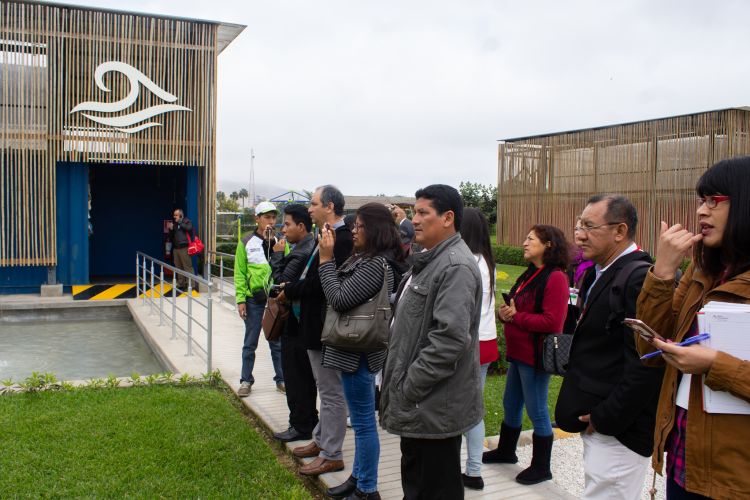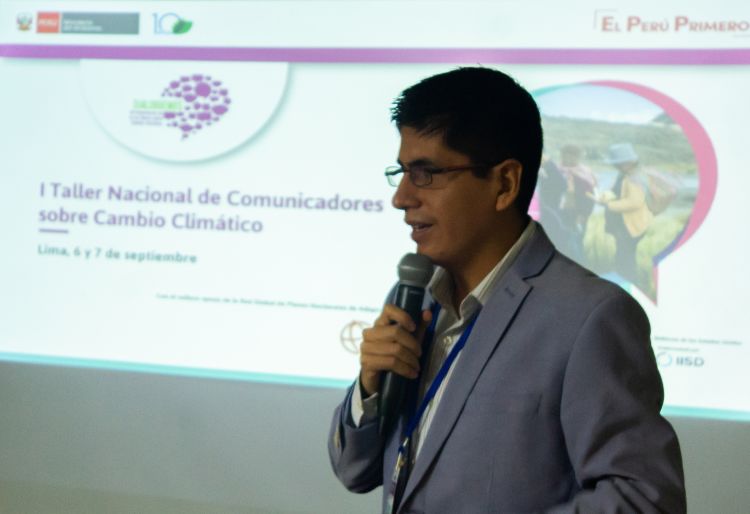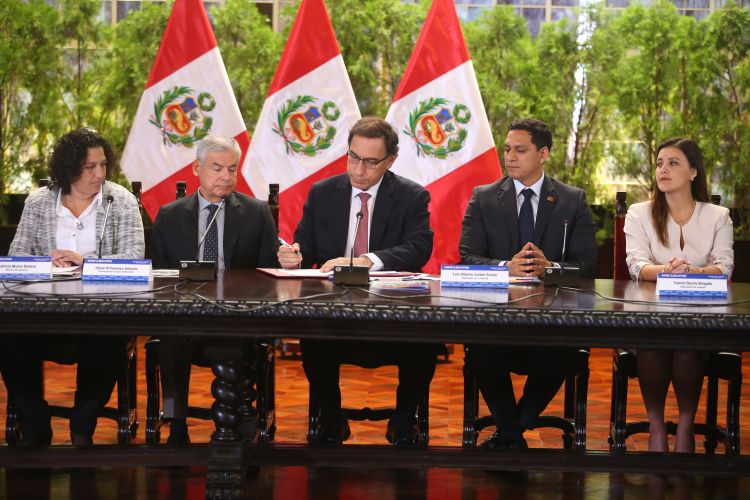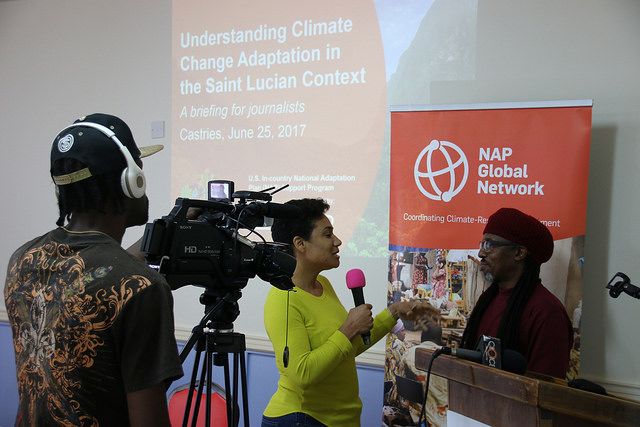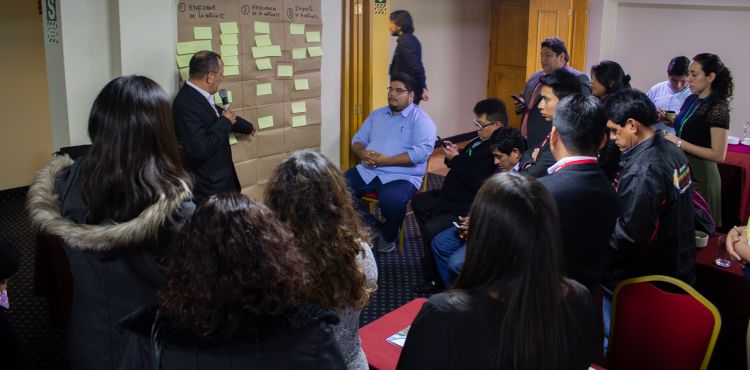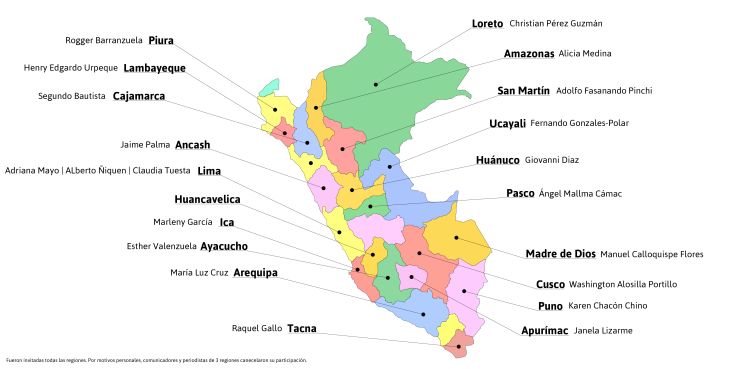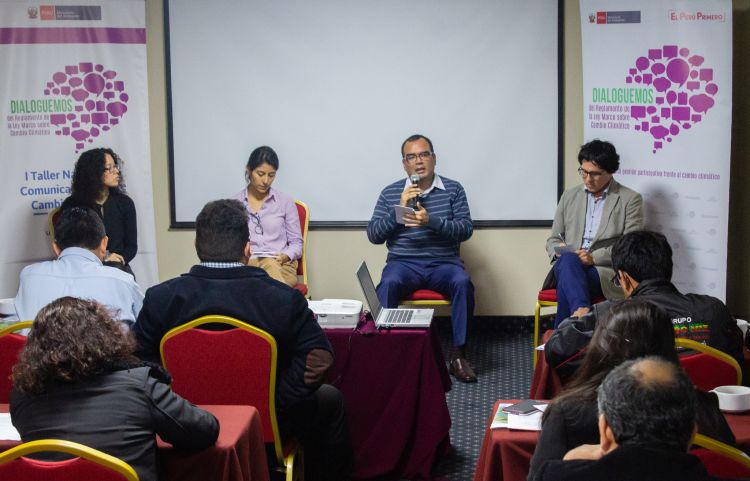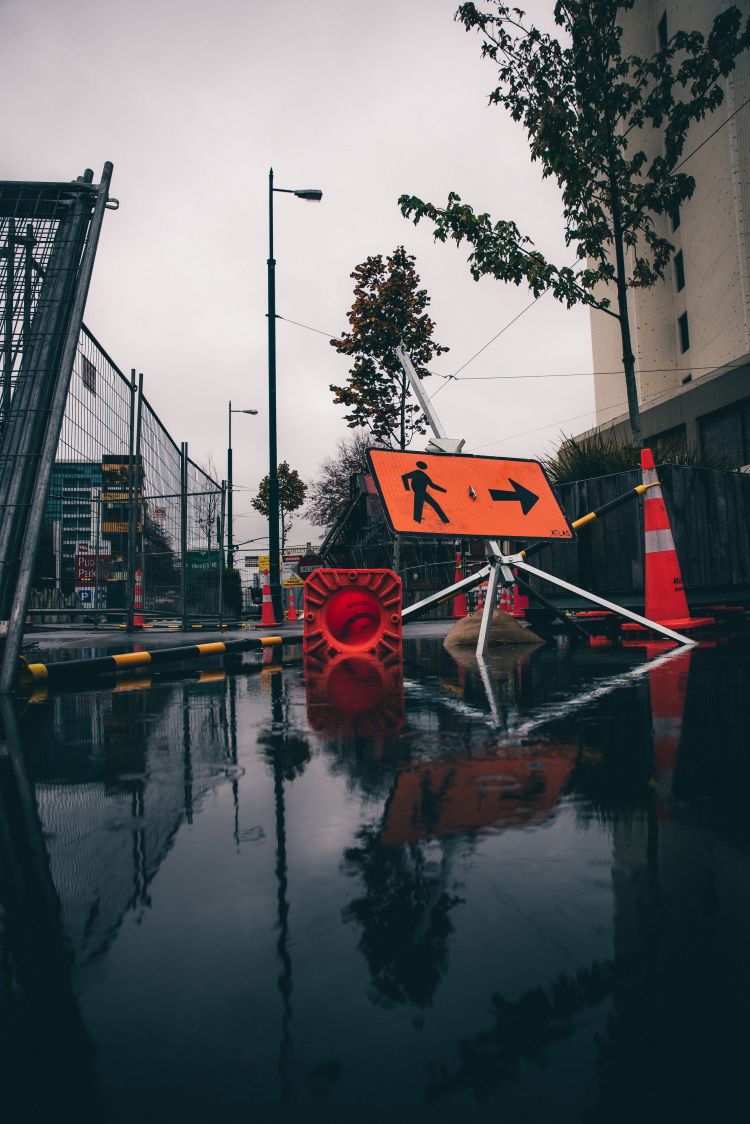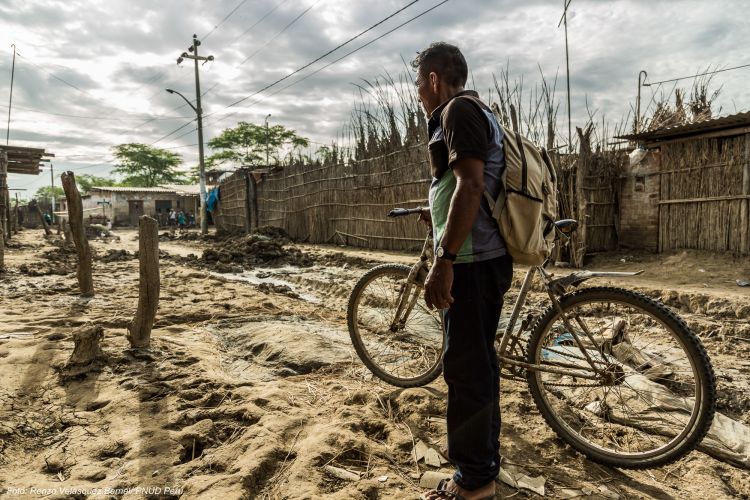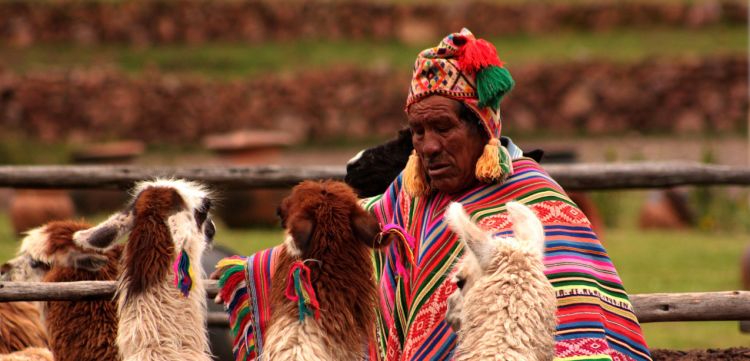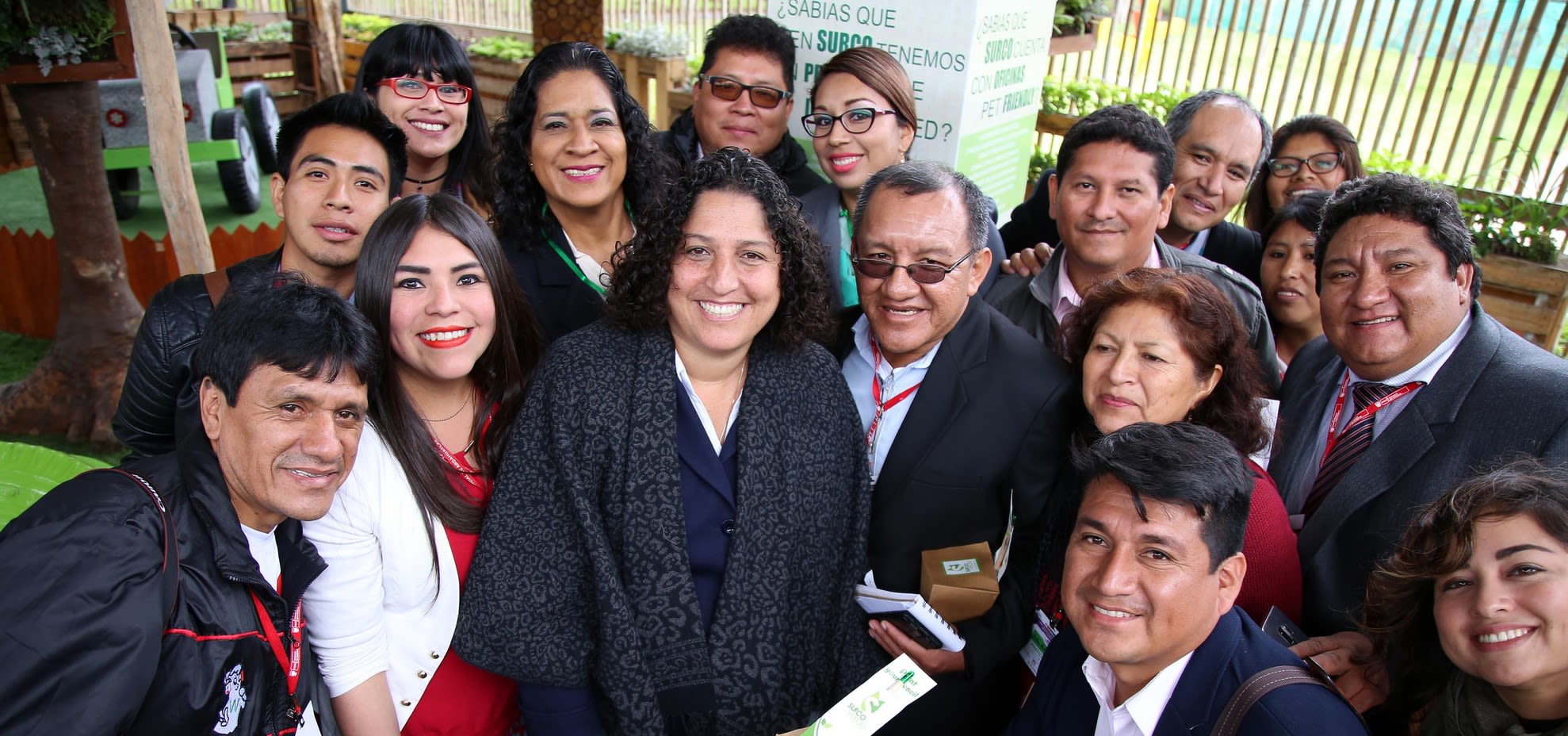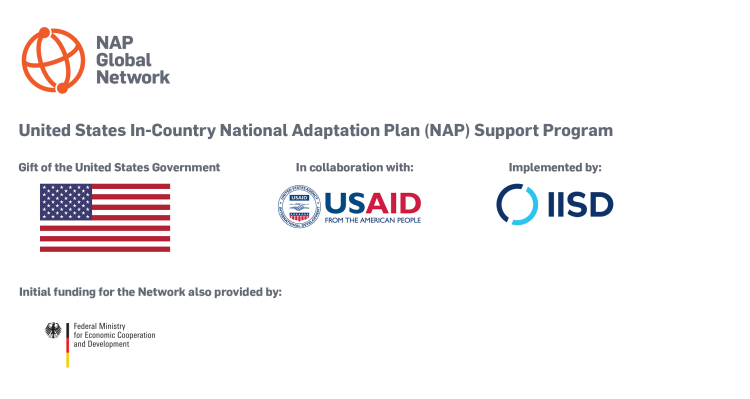The Role of the Media in Addressing Climate Change
Interview with the communications specialist Víctor Santillán on the First Peruvian National Communicators Workshop
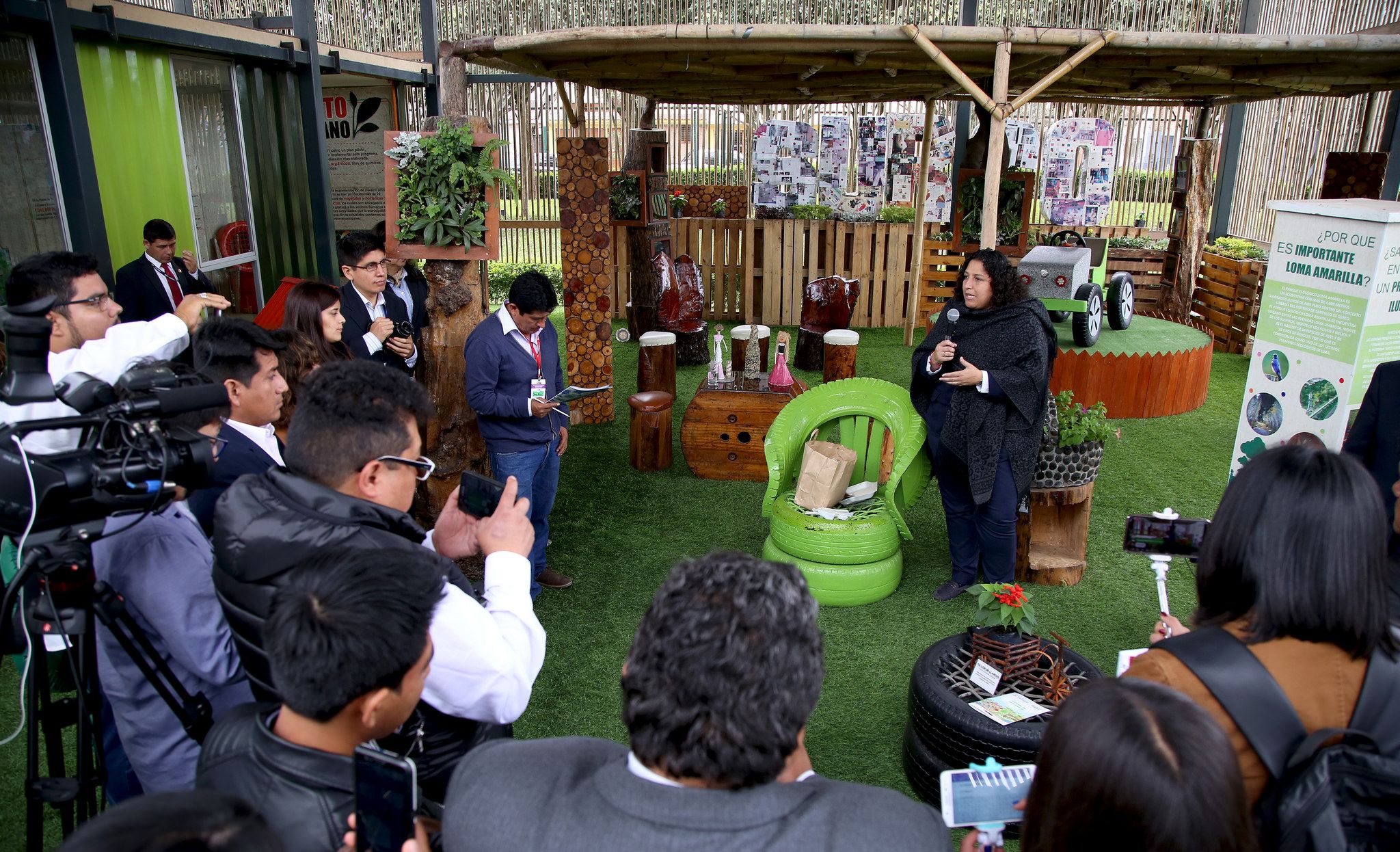
On September 6-7, 21 journalists representing various types of media from most of the regions of Peru met in the capital, Lima, to discuss how to improve the quality of coverage for topics relating to climate change and adaptation in the country. During two days of intense learning, communicators had the opportunity to increase their awareness of the fundamental role of the media in implementing the provisions of the Framework Law on Climate Change, which was signed in April by the Peruvian President, Martín Vizcarra Cornejo.
As a communications specialist from the Directorate-General for Climate Change and Desertification at the Peruvian Ministry of the Environment (MINAM), Víctor Santillán was one of the organizers of the inaugural Peruvian National Communicators Workshop. He talked to the National Adaptation Plan Global Network (NAP GN) about the event's outcomes.
NAP GN: Víctor, can you tell us how the First Peruvian National Communicators Workshop was organized and the reasons behind it?
Víctor Santillán: This workshop was developed as part of a much wider participatory process, the "Dialoguemos" process to establish the regulations under the Framework Law on Climate Change. This year the Government of Peru passed the Framework Law on Climate Change, and to draw up its regulations, which put the law into practice, the Ministry of the Environment opted for a participatory process where various actors from civil society, the public and private sectors, academia and NGOs can help to establish the regulations. We therefore feel that communicators and journalists are key actors in this process.
Second, we recognize that, if climate change messages do not target communicators too, they will not spread widely enough, because there is a lot of technical terminology and information that needs to be explained, and because above all we need to learn, as communicators, how to talk about climate change.
Faced with these demands and challenges, we decided to hold a national workshop of communicators on climate change, which is particularly relevant in the light of the Framework Law on Climate Change.
Video about the regulation process of the Peruvian Framework Law on Climate Change
Lessons learned
The importance of NAP Global Network events in Fiji and Saint Lucia
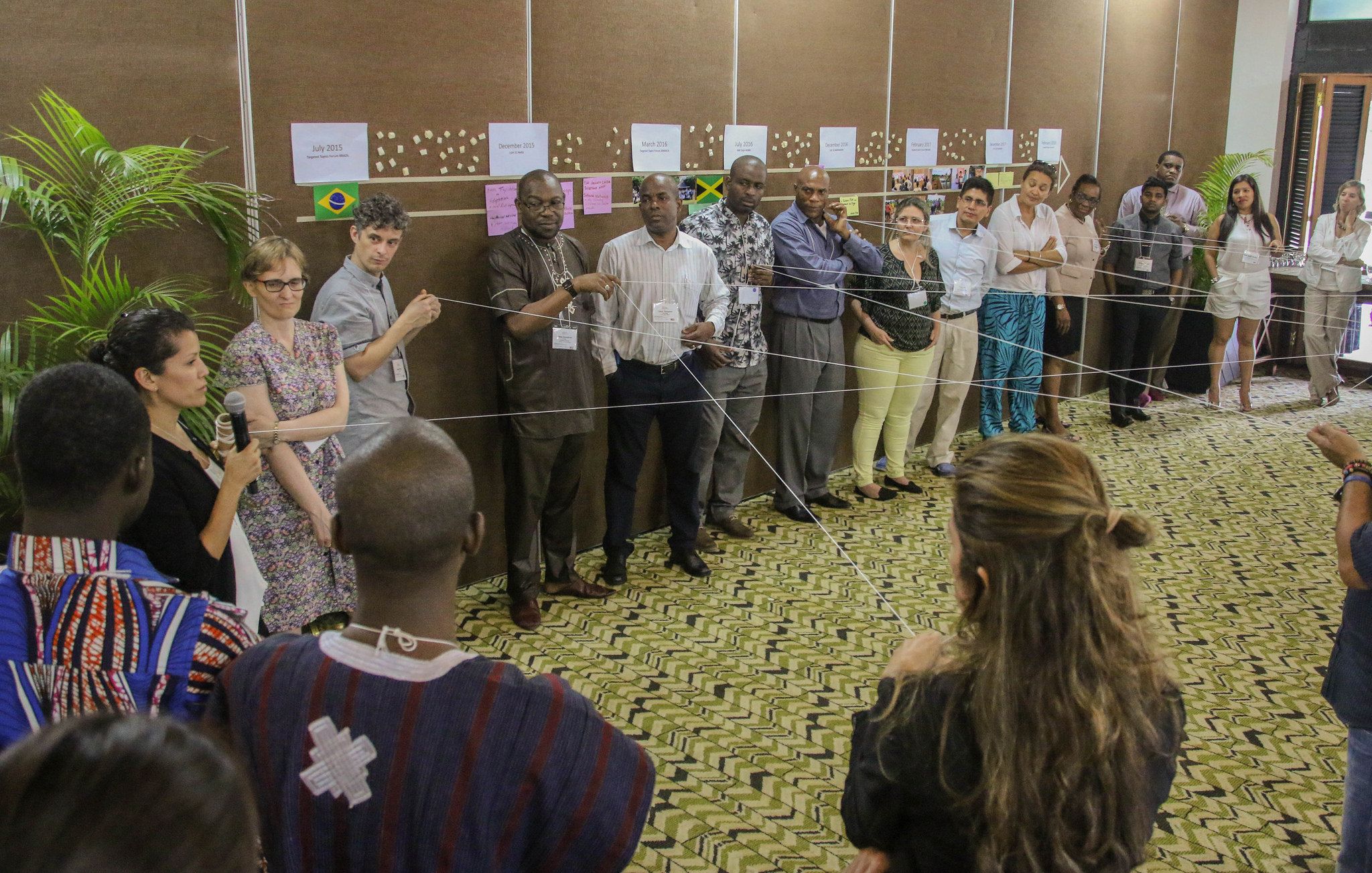
NAP GN: You attended similar meetings before that were organized by the NAP Global Network in Fiji and Saint Lucia; what lessons did you learn from these events and how did you put them to use during the workshop in Peru?
VS: A lot was learned in both situations and we sought to repeat this. From the Saint Lucia meeting, which was aimed exclusively at communicators, there were two things we wanted to copy. First, the diversity of the meeting. Many journalists and communicators on the island attended. Although it is a small island of course, inviting a representative number of journalists seemed to be extremely important for our own workshop, so that's what we did.
Second, the theme of working on messages with journalists. It would have been very different to tell them: "Here are the messages, this is what you have to communicate, this is what you have to publish through your means of communication." In Saint Lucia we worked on, prepared and built climate change messages during the workshop itself, together with journalists, by including their experiences and expertise, with all the baggage they carry as communicators. This was very important and we tried to do this in Peru.
Based on the experience of the event in Fiji, two key lessons were copied. First, we talked a lot about the importance of ensuring a coordinated communications strategy. After the workshop comes the most important step, which is to stay in touch and maintain communication between communicators so that the messages and lessons continue.
The second major lesson was the importance of opportunities relating to climate change. In Peru, as in many parts of the world, climate change is seen as a threat and as bad news: rainfall, retreating glaciers, flooding, catastrophes, etc. But rarely is climate change seen as a chance to be prepared, a chance to grow in a sustainable way, a chance to improve our crops, a chance to promote group work, with the country united as a single force.
The journalists
The ability of communicators to handle themes relating to climate change adaptation
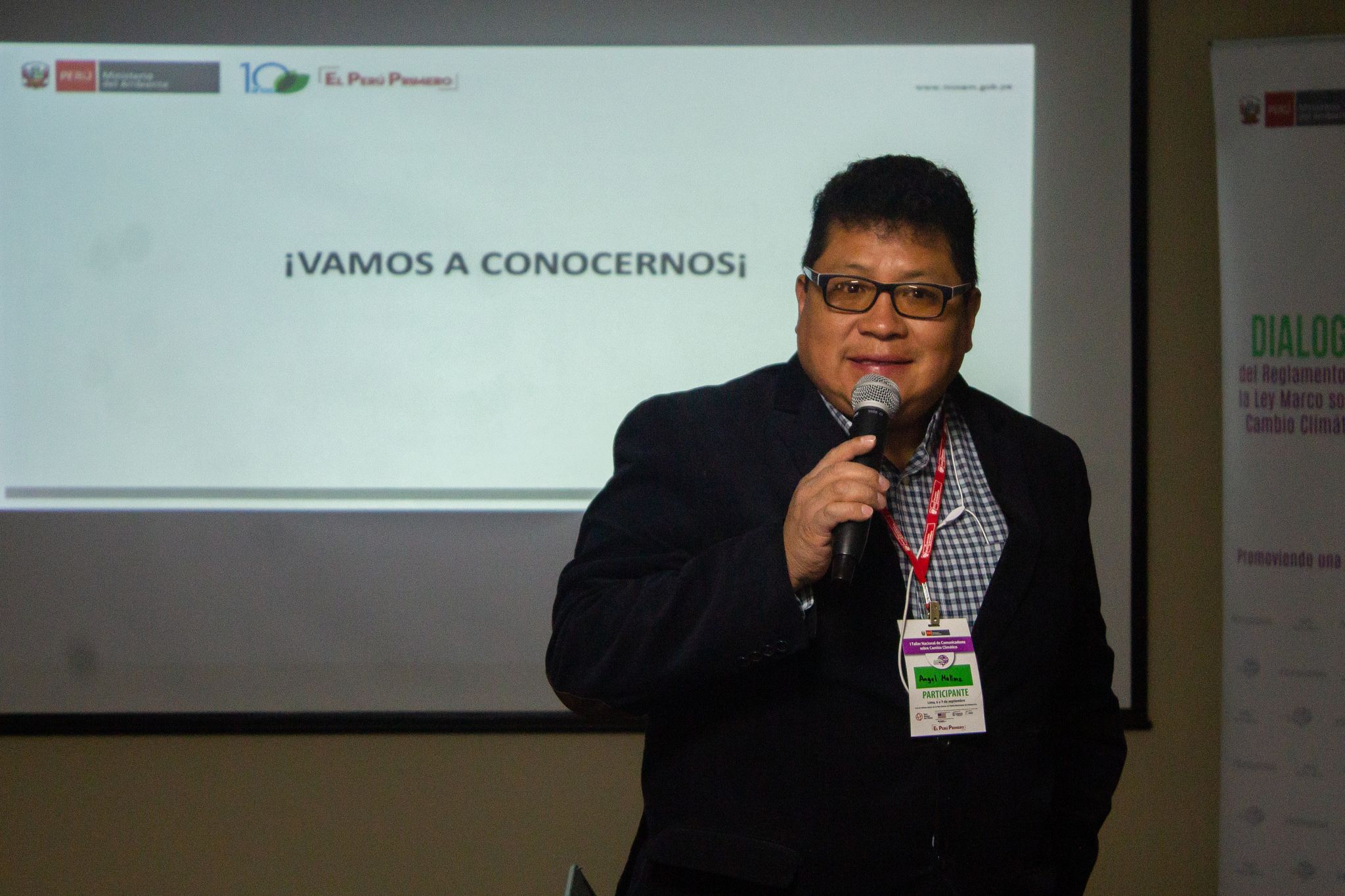
NAP GN: Can you tell us more about journalists' current ability to cover climate change adaptation? Do you think there's a lot of room for improvement?
VS: In terms of climate change there is still a big gap that we need to see as an opportunity to create training spaces for communicators in two areas. First, to clarify what climate change means, which is what we did in this inaugural workshop. Climate change does not necessarily mean contamination or burning rubbish in the streets; or if in Lima the sun was out when it should have rained or if it rained when the sun should have been out.
There needs to be scientific robustness based more on what climate change is, what causes it and what impacts it has. This is what we attempted in the workshop. Second, one of the conclusions from the workshop was that we need training, and participants identified the need for spaces where, for example, a university can provide a few hours of instruction, either virtually or in person, and award certificates on the theme of climate change.
This will enable them to communicate and to transmit clear and, above all, simple messages, so that the public can understand them, because people are confused when we talk about greenhouse gases, vulnerability, adaptation and mitigation.
Relationship with the media
How the government and experts can have a closer relationship with journalists to improve coverage of climate change adaptation
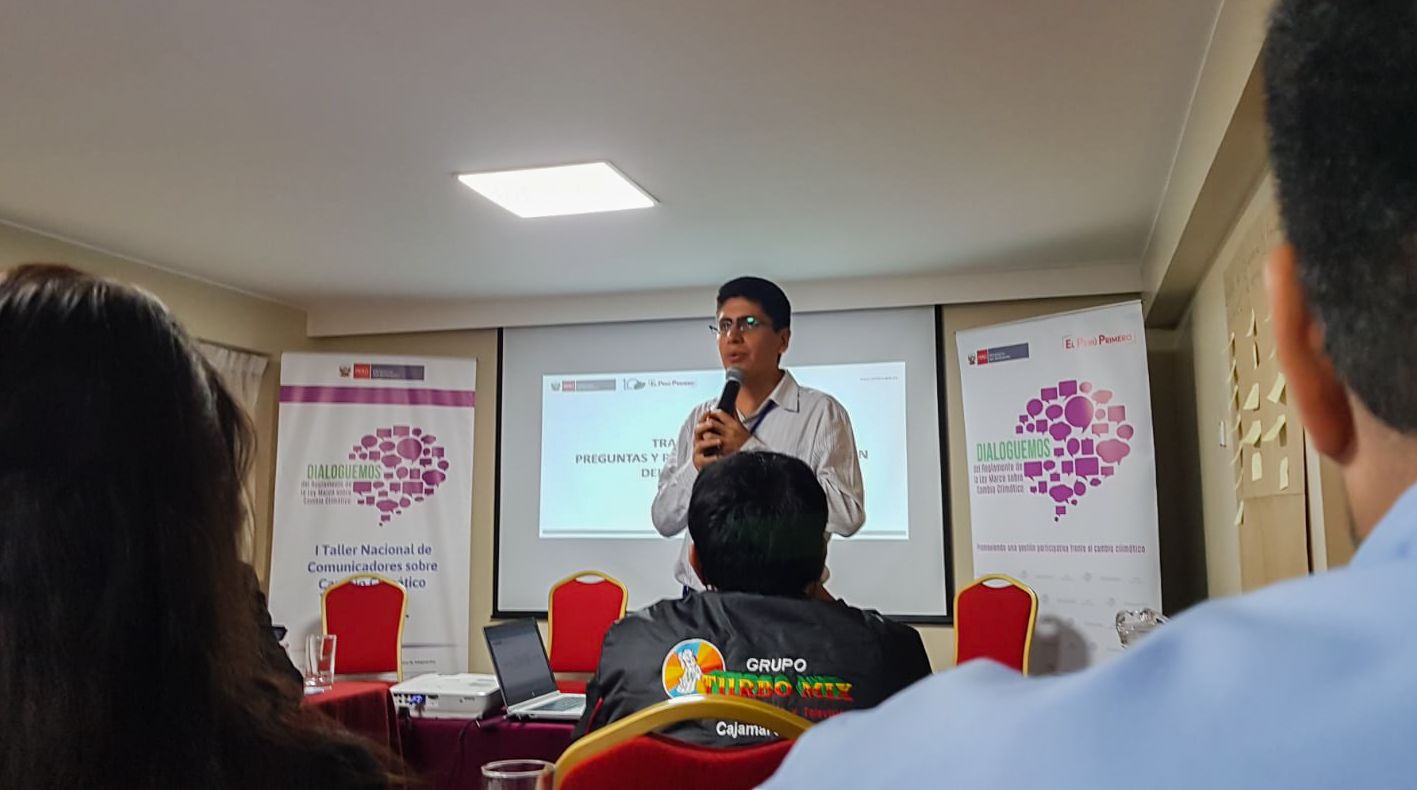
NAP GN: What is the government's role in improving its relationship with journalists,providing them with more content so that climate change and adaptation are reported more consistently in the media?
VS: I believe that there has been a double commitment, thanks to this workshop. First, the Ministry of the Environment's Communications Director reviewed the goals of the event, helped to prepare the list of attendees, followed up and guaranteed that the Ministry of the Environment would dialogue with the journalists who took part in the workshop. This dialogue was really meaningful because the Minister of the Environment, Fabiola Muñoz, answered the journalists' inquiries for more than two hours. She showed that the Ministry had agreed to be an open channel of information, and that communicators could contact specialists and officials at the Ministry to receive all the information they required.
This workshop helped to build a bridge, which we hope to strengthen. The journalists who attended the event remarked that a Minister, one of the highest office-holders in the land, had given them two hours of her time, answered all their questions and was ready to provide them with more information. This was a significant achievement.
Nuestras acciones afectan el bienestar del 🌎. Es hora de hacer frente al #CambioClimático. “Todos tenemos que lograr un cambio de cultura", ministra @FabiolaMunozD en conferencia con 25 periodistas regionales.
— Ministerio del Ambiente (@MinamPeru) September 8, 2018
🗞https://t.co/lbVdRURUtJ https://t.co/4YVyltXNUx #ElPerúPrimero pic.twitter.com/yxM6nZDkfu
No scaremongering
How to nurture people's interest in the coverage of climate change adaptation
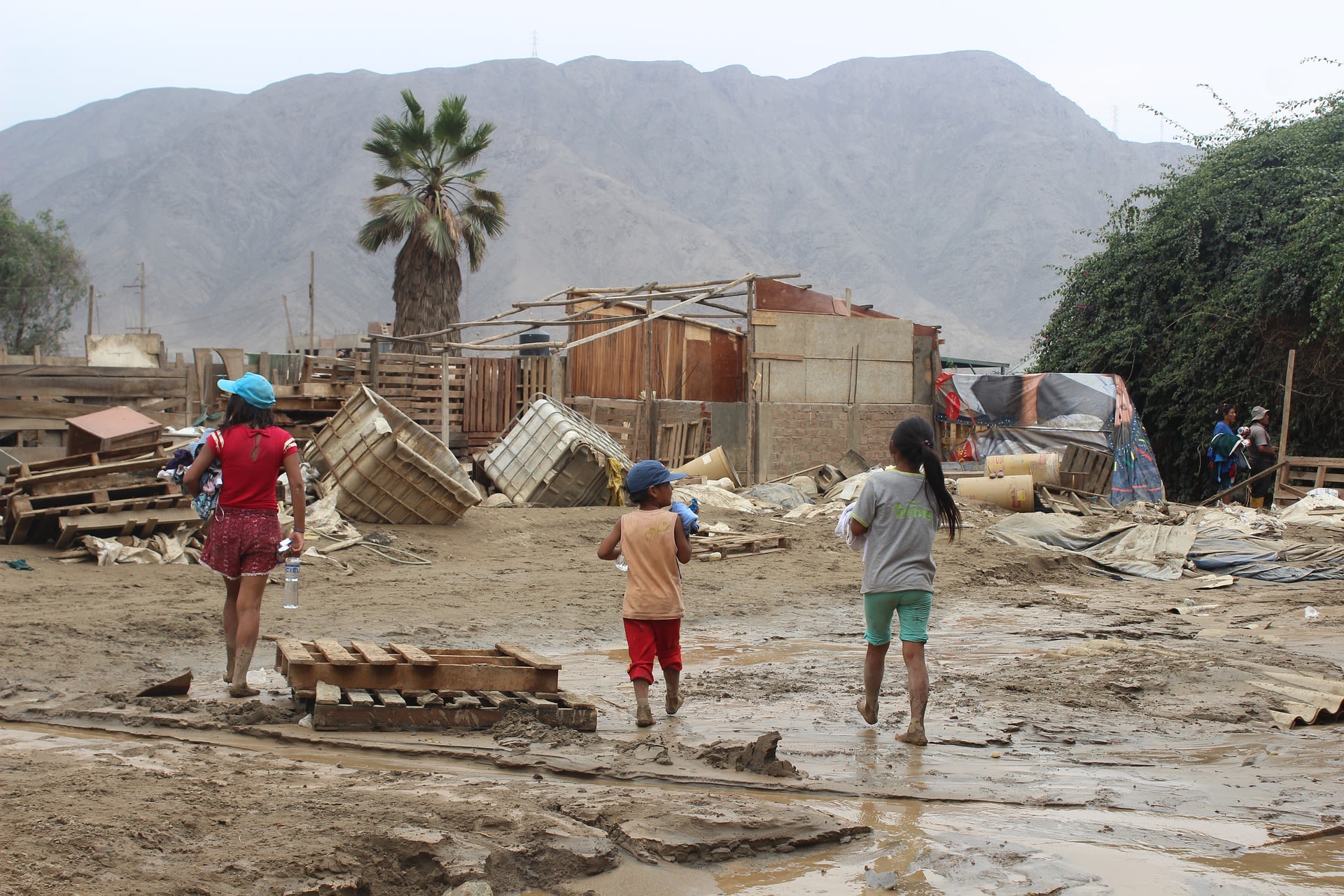
NAP-GN: Can you say something about how coverage of climate change can be improved in a way that avoids focusing on alarmist or sensationalist terms?
VS: One of the conclusions from the workshop is that this challenge exists and we need to work on it. What we have been doing since the U.S. In-Country NAP Support Program for Peru was launched is to tone down these kinds of message.
First, we use numbers because people are always interested in the economy. It is important to quote numbers on climate change. To what extent will we be affected? How much can we gain? This approach will help to prevent climate change being seen as a distant, technical or highly theoretical topic.
For example, saying that if we implement our National Adaptation Plan and adaptation measures that fall under the Nationally Determined Contributions, this will enable us to save 7 to 10 times the recovery cost from the impacts of climate events such as El Niño Costero (ENSO).
Another example is saying that our country will have to reduce its fishing output by 80% due to the impacts of climate change, which would affect the availability of our popular dish, ceviche.
Second, messages have to be transmitted in a more approachable way, in addition to press releases, videos and photos, which are important.
We can also use tools such as marketing or social awareness campaigns, dialogue in social spaces, taking to the streets or giving young people a voice. I believe that these details are being developed and it is one of the greatest challenges we face, even as a result of this workshop.
Indigenous populations
The role of native populations in broadcasting information on climate change
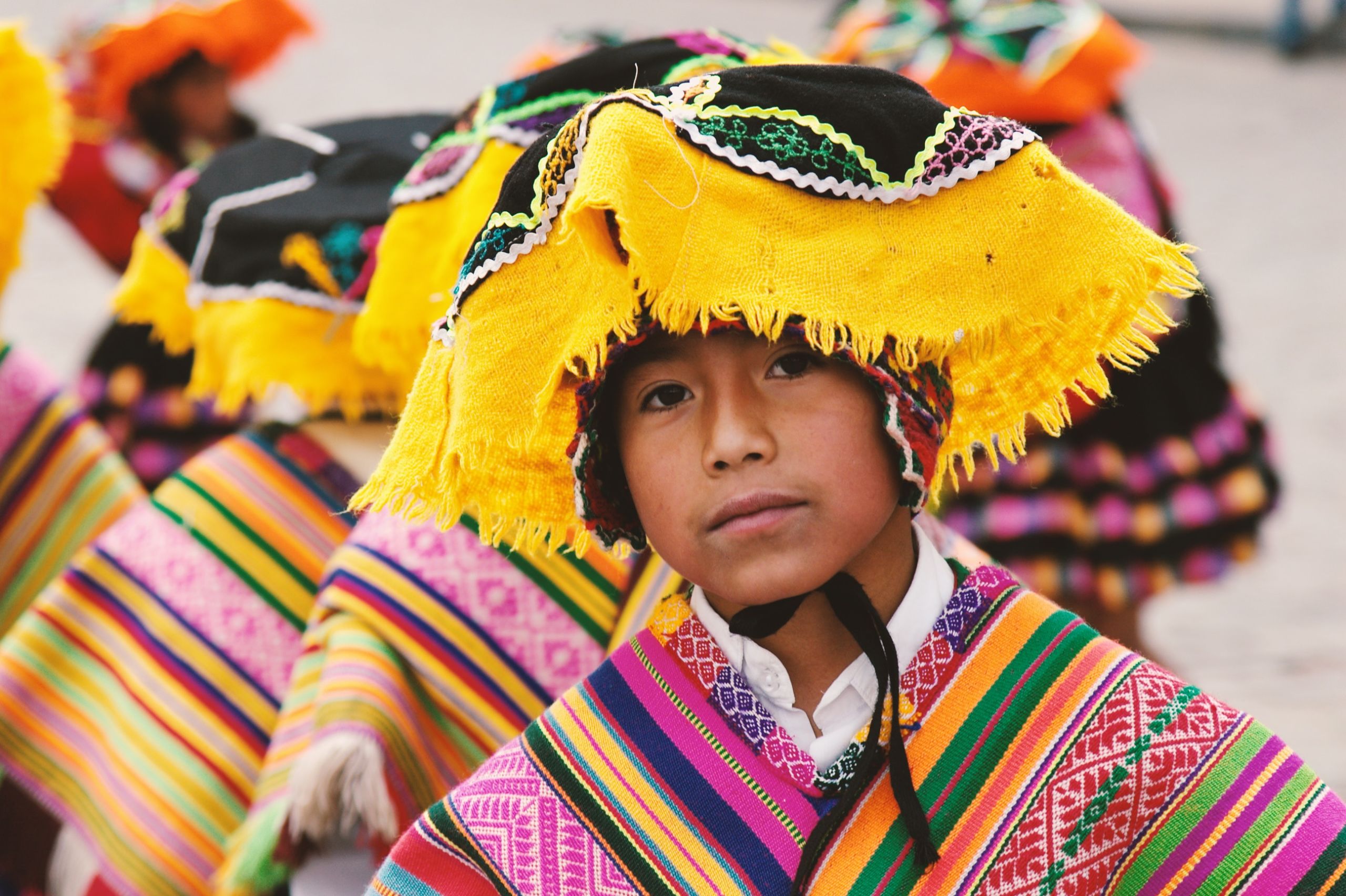
NAP GN: How important is it to develop separate communications strategies for indigenous populations in Peru?
VS: Indigenous populations have a message to share and we have a message to listen to and broadcast. I think that the participatory process used to establish the regulations under the Framework Law on Climate Change has succeeded in making the law a priority.
One of the major challenges of the workshop was that we realized there were no indigenous communicators; all the communicators were from the main populations of each region.
There were no communicators who could speak in the original languages of indigenous populations, and this was a big challenge that we recognized, since on average about 20 of the 24 regions have indigenous populations.
Peru has many languages, considering there are 55 indigenous populations in the country, and some people can only use these languages. If the climate change message is to reach the whole country, it has to be made in the Quechua, Aymara, Aguaruna, Shipibo Conibo, and Asháninka languages, which need to be used to distribute the message of adaptation and sustainable development in the face of climate change.
Looking to the future
Conclusions of the First Peruvian National Communicators Workshop
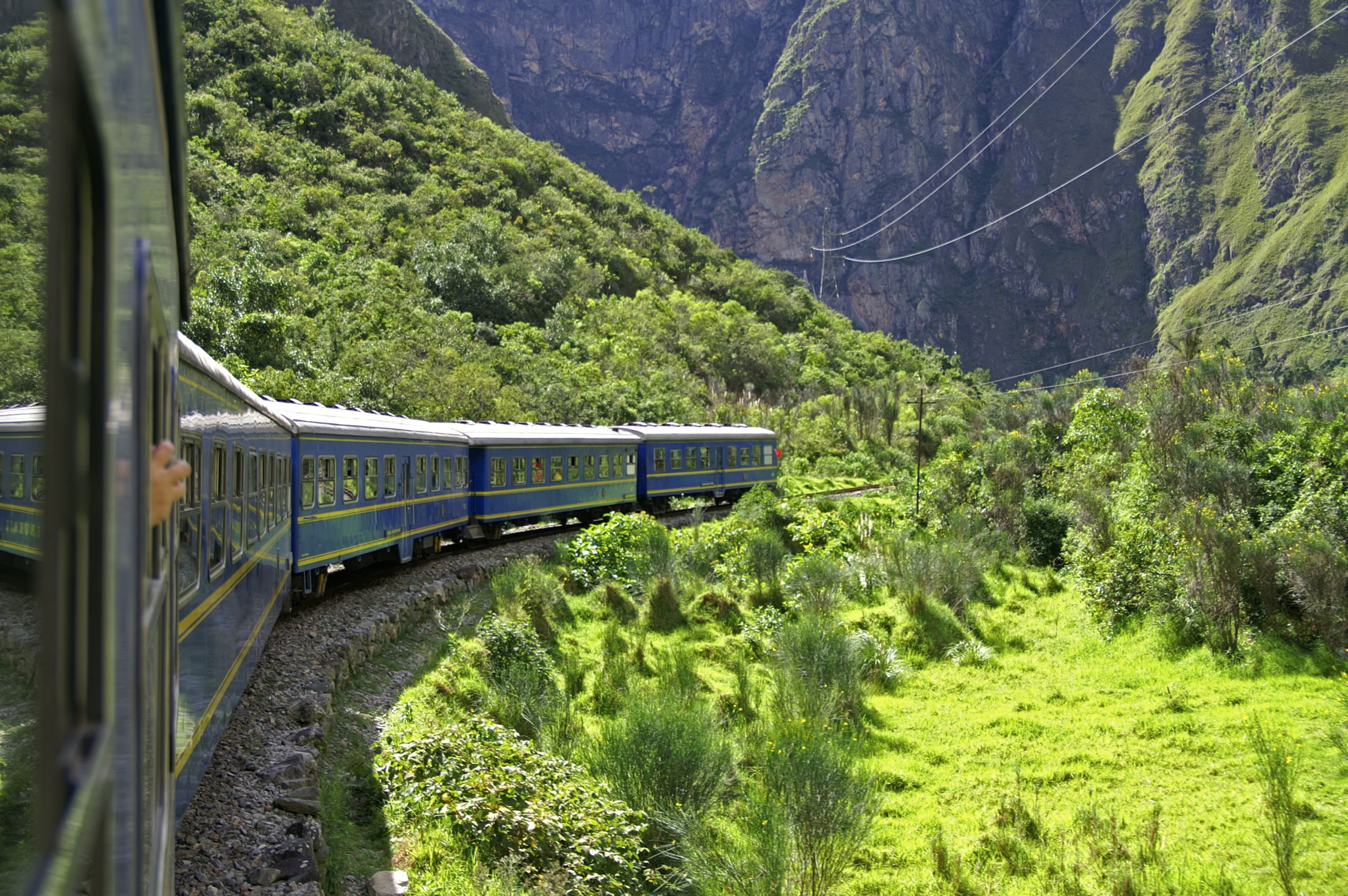
"We learned that communication is not only a tool; it is not just about spreading news of climate change. Communication is, above all, the opportunity to establish a dialogue..."
NAP GN: What are your final reflections on the workshop? What advice can you give other countries that want to organize similar workshops?
VS: First, I want to express my thanks, because without the experience of Fiji and Saint Lucia, this workshop in Peru would not have been possible. These experiences were extremely important to identify lessons and good practices, and I would encourage other countries in the NAP Global Network to take on this challenge.
Second, we learned that communication is not only a tool; it is not just about spreading news of climate change. Communication is, above all, the opportunity to establish a dialogue so that we can talk, listen to and transmit a message and that, based on such communication, a new coordinated, integrated, participatory, transparent and inclusive message is built. This message is much stronger than the message we would have given if communication were seen as only a tool.
Watch the video about the First Peruvian National Communicators Workshop
I would make three general points about the workshop.
First, the commitment of the high-ranking Minister of the Environment, who spent more than two hours talking to communicators on how Peru is addressing the impacts of climate change, highlighting that: "a climate-responsible country is a country that grows."
Second, the wealth of information, because there were communicators from 21 regions in a country as large and diverse as Peru. Some communicators spoke of their experiences in the jungle, others of their experiences along the coast, while others spoke of the mountains; this was wonderful.
Finally, we don't want the information from the workshop to stay there. The question "What comes next?" is even more important: the next steps are to act on the commitments as well as on the challenges we discovered when developing them.

